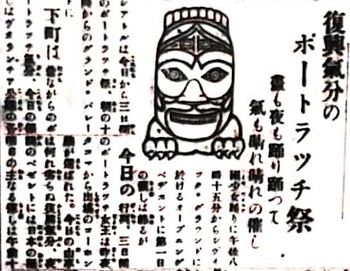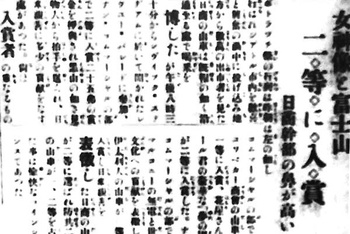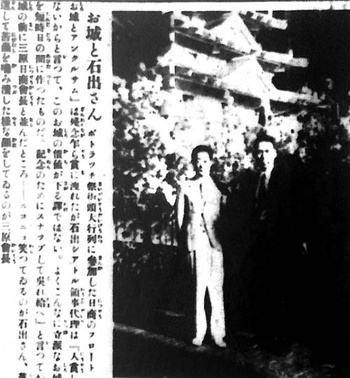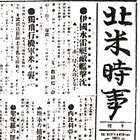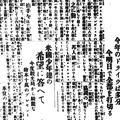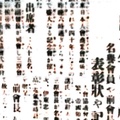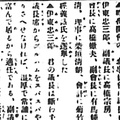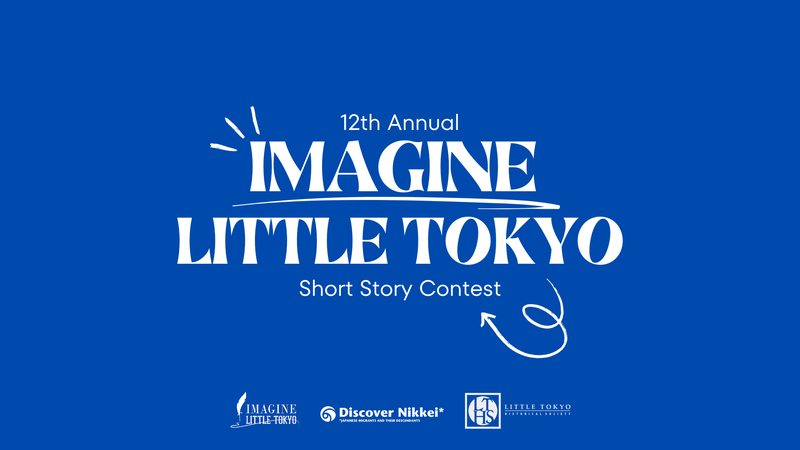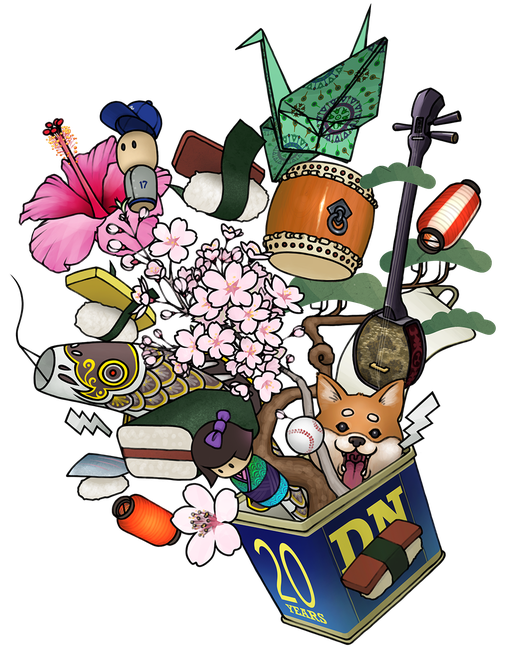In the last chapter, I introduced articles highlighting contributions from Japanese associations to the community chest in Seattle. This chapter will delve into articles1 from the North American Times covering the Potlatch Festival, an annual seven-day event held in July in Seattle.
Participation in Potlatch Festival
The Potlatch Festival is a cultural celebration of Northwest Coast Native American tribes, attracting many American visitors annually as a beloved event in Seattle. The Japanese community contributed by showcasing Japan’s history and promoting U.S.-Japan friendship though elaborate floats for the parade. Their participation earned high praise from American attendees.
In 1934
“Seattle’s City Festival to be Revived This Year” (July 6, 1934 issue)
Seattle hosted its first Potlatch Festival in 1911 and the fact that it was held for four years in a row with great magnificence must still be in the memory of those who live in Seattle, even though they may not be long-term residents. It’s been twenty years since the start of World War I and it’s been that long since Seattle called off the festival. Back then Seattle called the event the Golden Potlatch Festival.
“Potlatch” means to entertain guests in the indigenous language, and the city of Seattle invited a number of neighboring cities and towns and offered a variety of entertainment. What they plan to revive this year will be called the International Potlatch Festival and the preparation is taking place for a four-day festival to be held from August 23 to 26.
“Large Torii Gate to be Donated to Potlatch Festival by Japanese” (July 11, 1934 issue)
The regular board meeting of kita-nissho-gi was held at 8 pm last night and they decided to donate a large torii gate to the Potlatch Festival which will be held in late-August. They plan to build a large torii with the height of about 30 shaku (about 9 meters) at the Metropolitan Center and donate it to the Seward Park.
“Performing Japanese Dance at Potlatch” (July 14, 1934 issue)
As part of the folk dance show the Japanese hand dance will be performed for ten minutes by 25 girls.
“Potlatch Begins with Parade at 10 am Tomorrow Morning” (August 22, 1934 issue)
The Japanese will participate in the following two events: at 2 pm on the 23rd, 25 Japanese girls from ages 9 to 12 in gorgeous Japanese dress will dance bon-odori and at 8 pm on the same day 80 Japanese people, both male and female, will dance bon-odori.
“Potlatch Festival with Revival Vibe” (August 23, 1934 issue)
Starting today, Seattle will host the Potlatch Festival for three days. The grand parade is scheduled at 10:00 in the morning.The old part of the town is in the good old Potlatch mood from back in the day. Today’s highlight is the dance by girls from various countries and the opening event at 8:10 pm.
In 1938
“Some Main Events During the 4-Day Potlatch Festival” (July 25, 1938 issue)
The red-haired Phyllis Savage was chosen as the queen of the Potlatch Festival which will be held for four days from the 28th to the 31st . . . . The term “potlatch” comes from the indigenous language and refers to the festival where gifts are sent to the chief and people celebrate in joy.So, the Potlatch Festival is rooted in “joy” as its basic spirit.
Seattle hosted its Potlatch Festival in 1911 and it was suspended for some years after that. As this festival will be a big revival they expect 100,000 people in attendance this year. On the 29th, there will be a big parade of flower-covered floats and Nissho will offer their own float symbolizing the Japan-US friendship.
“Street in Decoration Creates Festive Mood” (July 27, 1938 issue)
Nissho’s float that symbolizes the Japan-US friendship will be completed by the end of the day tomorrow with an aim to replace the anti-Japan ambiance with a friendly vibe . . . . Their design shows some girls wearing Japanese and American clothes with the images of the Statue of Liberty and Mount Fuji in the background, representing the peaceful relation between Japan and the U.S. The members of the women’s group and the girls club are expected to help make cherry blossom flowers for decoration and the girls at the Taiyo Girls Club have been working hard to help others with a variety of things.
“Float Showcased at Potlatch Festival” (July 29, 1938 issue)
Accompanying Nissho’s float were Kazuko Fujinaka, Teruko Yoshida and Shigeko Fukushima in Japanese attire and Sachiko Kihara, Mariko Mukai and Kazuko Itoi in Western attire. The unique contrast of design with Mount Fuji, the red torii and the Statue of Liberty received a big applause almost everywhere along the street.The radio broad excited those who were listening: “We see the float by the Japanese participants passing by. Ladies in beautiful kimono are showing some fireworks . . . (Photo taken by the Jackson Photo Studio)”
“The Statue of Liberty and Mount Fuji Wins Second Prize” (July 30, 1938 issue)
The parade at the Potlatch Festival took place yesterday morning bringing joy and excitement to the city of Seattle andattracting some tens of thousands of people from outside the city. As reported before, Nissho’s flower-covered float received a great applause from the audience along many parts of the street and they took part in the Review Parade that was held at the Civic Stadium at 8:30 pm.
They won second prize in the non-commercial category and was given a prize of 25 dollars. Applause from a crowdof spectators, they certainly made a contribution to building the Japan-US friendship.
In 1939
“The Potlatch Festival” (May 8, 1939 issue)
As this year marks the 50th anniversary of the state of Washington, the Potlatch Festival will be held on a greater scale this year. It is scheduled to take place for six days from July 25th.
“Preparation for Potlatch Festival” (July 1, 1939 issue)
The meeting for Nissho’s preparation for the Potlatch Festival was held last night at 8 pm with 31 attendants. President Mihara started the meeting with his greeting. Mr. Yamaguchi was elected chairperson and in charge of the event.
“A Wide Range of Events at the Potlatch Festival” (July 17, 1939 issue)
The Potlatch Festival in Seattle will be held for six days from the 25th to the 30th. The US fleet and neighboring cities and towns will be participating so it is expected to be quite a bustling event with parades and various sports . . . . The grand parade through the city will start at 10 am on the 28th and among many floats the Japanese community will participate with Nissho’s castle and Uncle Sam’s float. On the 25th at Green Lake, there will be a swimming meet all day and a footrace at night and a large fireworks display at night on the 29th.
“The Potlatch and the Fleet Week” (July 24, 1939 issue)
The Potlatch Festival intended to also serve as a celebration of the 50th anniversary of the state of Washington and the Fleet Week started this morning. This year the central avenue is shining in with yellow flags hanging and we can feel the festive atmosphere by looking at the bright faces of passersbys. At Elliot Bay, eight capital ships of the US fleet have cast anchor and the sailors landing is making the city vibrant. (The details of the program from Monday the 24th through Sunday the 30th are published).
“Nissho’s Float Appears in Grand Street Parade” (July 25, 1939 issue)
The City of Seattle is in agreat festive mood as the Potlatch Festival and the Fleet Week began in the scorching heat. In the downtown area the sailors landing has attracted a huge crowd where people can hardly move . . . . The parade will start at 10 am and Nissho will present a float with a castle and Uncle Sam facing each other, connected by a bridge in the middle representing the friendship of Japan and America. On the float there will be ladies in Japanese attire:Mieko Date, Kaoru Uchimura, Hisae Tada, Hanako Yamada, Emiko Kojima and Teruko Kusaka. The float is currently being created by Yoshimoto Daiku’s porthouse and 70% of it is done.
“Contribution by Women” (July 26, 1939 issue)
Nissho is currently making their float which will be displayed at the Potlatch Festival. Last night they called for help from the following members to decorate it with imitation flowers. (They published the name of each member from the Baptist Church, the Methodist Church, the Congregational Church, the Presbyterian Church, the Buddhist Federation and the Nichiren Church)
“The Castle and Ishide-san” (July 31, 1939 issue)
Nissho’s float “The Castle and Uncle Sam” that was displayed in the city’s grand parade at the Potlatch Festival did not win an award unfortunately, but Acting Consul of Seattle Ishide commented, “Just because it didn’t win an award, it doesn’t mean this castle is of lesser value. It’s quite impressive that they made such a magnificent castle within a short period of time. To keep as a memory, can we have our picture taken with it?” and stood in front of the castle with Nikkai’s president Mihara next to him.
The one with a full smile is Ishide-san and the other with a grimacing face for not winning the prize is president Mihara.
We can see that the Nikkei in Seattle dedicated their efforts in every possible way to building the Japan-US friendship as exemplified in their active participation in the Community Chest and the Potlatch Festival hosted by the city of Seattle. To survive in the American society, they aimed to live and prosper together with America.
Japanese Americans living in Seattle make efforts to prosper in American society, as evidenced by their active participation in community initiatives like the Community Chest, which was mentioned in the previous chapter, and significant cultural events like the Potlatch Festival. Their efforts reflect a commitment to fostering goodwill between Japan and the United States.
In the next chapter, I would like to write about the achievements of Mr. Heiji Okuda and Mr. Chuzaburo Ito who made great contributions to the Nikkei community in Seattle.
*The excerpt from the article summarizes the original text.
Note:
1. All article excerpts are from The North American Times unless noted otherwise.
Reference:
The Committee of Japanese in America for Preserving Historical Events, ed., Zaibei Nihonjin Shi (History of Japanese in America), Zaibei Nihonjin-kai, 1940
*The English version of this series is a collaboration between Discover Nikkei and The North American Post, Seattle’s bilingual community newspaper. This article was originally publishd in Japanese on January 29, 2023 in The North American Post.
© 2023 Ikuo Shinmasu


